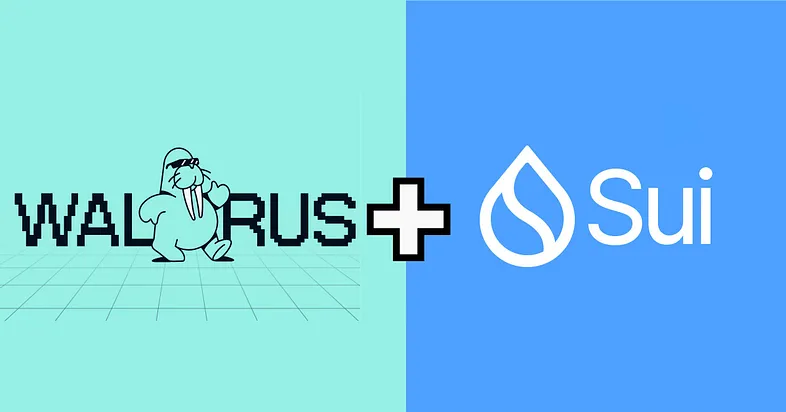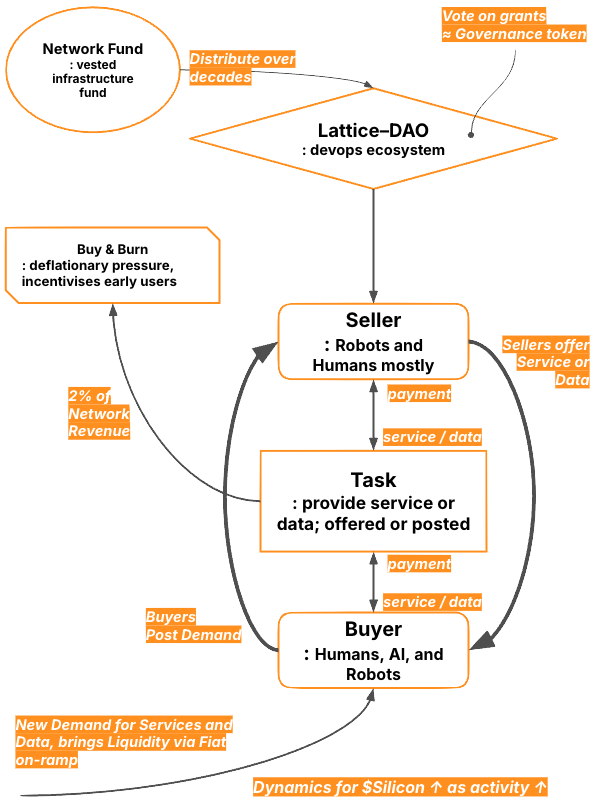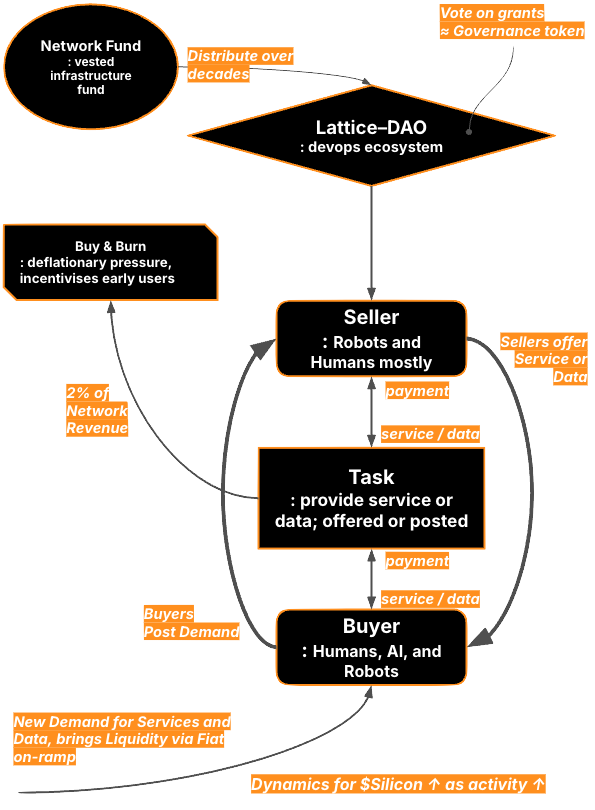How it works
Connecting Robots, AIs and humans seamlessly – natively secure, scalable and resilient.
Under the Hood
To power autonomous robotic coordination, scale matters on day one. We believe in the SUI blockchain and technology stack.

Sui was developed by Mysten Labs, founded in 2021 by former Meta engineers from the Diem blockchain project, aiming to create an innovative, internet-scale programmable blockchain platform from the ground up.
Its architecture scales horizontally, has low-latency parallel transaction processing, and cost-effective gas fees, enabling high-throughput, secure, and responsive decentralized applications. All the requirements for Lattice.
This will enable Lattice to operate at scale, in sub-second latency, and at ultra-low fees. Further, the Sui Stack provides all the abstractions needed to build truly seamless interactions:
- •User-friendly abstractions and frictionless Web2-like experiences using SUI's SEAL for robust encryption and Onchain access control for sensitive data
- •Large-scale, resilient, and easily manageable data storage on Sui´s Walrus - cost-competitive with the latest commercial cloud services at sub-second speeds
- •At the highest private and encrypted using Tusky's abstractions
The Lattice Ecosystem
The Lattice Network aims to enable efficient, market-driven resource allocation in the robotic age through a simple, scalable design. It:
- •Aligns incentives for sustainable, ubiquitous growth
- •Communicates a clear, straightforward structure
- •Strongly rewards early adopters to kickstart the network
- •Empowers users to collaboratively drive network development
- •Ensures secure, self-custodial, privacy-preserving, and censorship-resistant data handling
As an ecosystem, Lattice needs its own fuel, its own unit of exchange that users interact with implicitly or directly. The robotic age is going to be powered by $Silicon. Silicon will be the utility and governance token of the network.

At the Core
At the core of the Lattice System is a flywheel loop designed to drive network growth. It begins with a Buyer posting a Task, injecting capital into the ecosystem. Sellers can accept Tasks based on mutual agreement or predefined criteria, with payments, delivery terms, and optional escrow mediated by the Task itself.
Tasks are the heartbeat of the Lattice System. We craft Task Templates—Smart Contracts—that streamline interactions, creating seamless experiences for Humans, AIs, and Robots.
To accelerate growth and ensure sustainable funding in the early stages, the Lattice-DAO (Decentralized Autonomous Organization) injects Network Rewards into the flywheel. Holders of Silicon Tokens can vote on protocol development and DAO fund allocation. The Lattice-DAO receives Silicon Tokens from the Network Fund on a programmatic, decades-long schedule, ensuring long-term development.
To enhance network dynamics and introduce deflationary pressure, the system programmatically buys back Silicon Tokens with fiat or burns a portion of them. The network is designed so that increased activity drives demand for Silicon Tokens. Users can choose to interact directly with Silicon for exposure to network growth or opt for seamless conversions to fiat or stablecoins (e.g., USD or EUR) for convenience.
Lattice System Tokenomics
Lattice economics rewards early network participation and active contribution to share the protocol. Every robotic task, service, or data exchange coordinated through the network incurs a 0.3% fee, aside from running costs. This revenue share goes to holders of the governance token, distributed to those actively building and shaping the network, early builders, and investors. Every transaction itself is paid for in our utility token, $Silicon, that users may choose to hold for lower transaction costs or interact with behind the scenes. Growing network utilization leads to higher demand and rising token value of $Silicon, with an inbuilt fixed supply and deflationary mechanisms. This rewards early users choosing to hold $Silicon, addressing the network cold start problem a new protocol faces.
We start by enabling companies to source training data for embodied AI, then expand into robotic fleet coordination and, ultimately, a global task network where humans and machines collaborate as peers. By 2050, humanoid robots could impact jobs worth approximately $3 trillion in the US alone, as suggested by Morgan Stanley, or $24 trillion globally by 2030, predicted by ARK Invest in revenues, split between household and manufacturing robotics. Lattice aims to mediate the pronounced long-tail of robots that will be owned by medium and small-sized businesses and individuals, capturing 40% of this.
Projected Protocol Revenue:
We estimate a protocol revenue of $1.8 - $14.4 trillion by 2030, potentially capturing $54 - $432 billion in revenue.
Users can participate in the network’s growth by holding $Silicon, and builders by earning Governance Tokens by completing tasks the Lattice DAO sets.
Total Supply: 1,000,000,000 Silicon Tokens (fixed, no inflation).
- •Team: 15% (150,000,000 tokens), vested over 4 years.
- •Ecosystem Fund: 20% (200,000,000 tokens), dedicated to development and partnerships.
- •Community: 65% (650,000,000 tokens), distributed through Task and Curation Rewards.
Distribution: No presale. Tokens are allocated solely through Task and Curation Rewards to foster community participation.
Silicon Token $SIL
Roadmap:
- •Q2 2025 (Now): Finalized tokenomics, audited Sui contracts, Walrus integration.
- •Q3 2025: MVP launch, closed beta (agriculture, mapping, human tasks).
- •Q4 2025: Public beta, reputation system, zkLogin rollout, marketing.
- •Q1 2026: Full launch, advanced reputation, stablecoin conversion.
- •Q2 2026: Data marketplace launch, expanded partnerships.
